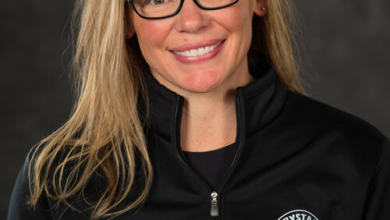5 tips for completing your ‘to-do’ list

Season 8 of the podcast Chasing Life with Dr. Sanjay Gupta gets back to basics with an in-depth examination of the brain in different states. Each episode will focus on one of those states — the distracted brain, the frightened brain, etc. — to spotlight what is going on in our heads and how it affects our bodies.
(CNN) — Do you walk around with a to-do list in your pocket or in your head? If so, you are not alone.
It’s a fact of life that most people have an ongoing list of tasks that must get done on a regular basis. Things such as feeding/bathing/transporting yourself (or the kids), washing the dishes, swinging by the grocery store, doing laundry, taking out the garbage, mowing the lawn, paying bills, tidying the house. You get the idea.
But sometimes managing even the simplest task can seem insurmountably hard.
Houston author and licensed therapist KC Davis learned this firsthand at the start of the pandemic. At the time, she thought she had an airtight plan that would allow her to work after her second child was born.
“Unfortunately, three weeks after I gave birth, I got a phone call from the day care saying, ‘Hey, lockdown has started. …’” And just like that, her plan evaporated.
And all those “care tasks,” as she calls them, started to pile up as depression.
“As I struggled really hard to take care of both babies’ needs at once,” Davis told CNN Chief Medical Correspondent Dr. Sanjay Gupta recently on his podcast, Chasing Life. “All of a sudden, the dishes start piling up, the laundry starts piling up. You know, I’ve always been a messy person, but it’s always been functional. And for the first time in my life, it really wasn’t functional.”
Davis did what many did when the pandemic began: She turned to TikTok, posting about her struggles, along with her evolving approach to solutions. She attracted many followers and eventually even published a book called “How to Keep House While Drowning: A Gentle Approach to Cleaning and Organizing.”
Davis said those care tasks are seemingly simple, but in reality they’re complex, involving many steps that require executive functioning skills.
“Executive functioning skills happen in your prefrontal cortex,” Davis said. “It’s the part of your brain that does time management, that does task initiation, that looks at something and breaks it down into steps. And if those things are all firing on all cylinders for you, it feels automatic. You just decide to do the dishes and you do them.”
But sometimes it’s not automatic.
“There are some people that have disorders that disrupt those executive functions,” she said. “If you are depressed, anxious, if you’ve got ADHD … but even if you don’t have a diagnosis, there are lots of things that can compromise your executive functioning: sleep deprivation, chronic stress, being burnt out.”
Life circumstances, such as having a sick parent or experiencing a busy period at work, can also erode a person’s executive functioning ability.
When one or more stumbling blocks derail you, you can feel overwhelmed and even paralyzed — unable to complete your care tasks, which then start to pile up and overwhelm you even more. The longer it goes on, the worse you feel about yourself and the more frozen you can become.
It’s important to understand that the inability to perform care tasks is not a moral failure, Davis said.
“I want people to know that care tasks — whether it’s cooking, cleaning, dishes, feeding yourself, getting into the shower — they are morally neutral. Meaning, if you find them hard to do, that’s not a reflection on whether you are good, bad, right, wrong, a success or failure,” she said.
“It’s almost never this issue of not trying hard enough. It’s always an issue of a legitimate barrier, a struggle to get the right coping skill, a struggle to get the right guidance, and really the struggle to stop hating ourselves long enough to figure out a way through.”
Plus, experiencing self-hate, guilt, anxiety and shame, Davis said, make it even harder to break out of the cycle, in part because these emotions hijack precious brain resources: Instead of focusing on the task at hand, you may dwell on the futile activity of self-flagellation.
“No one has ever berated themselves into better mental health, and you deserve practical solutions that work with the level of ability you have today,” she said.
So, what are some of those solutions? Davis has these five tips:
Find a solution that makes sense for you. For example, going all-out Marie Kondo overnight might not be feasible — it wasn’t for Davis.
“What I had to realize was, I’m a messy person, I have ADHD, I have two kids, I have a dog, a cat, right? Like I have all these things,” she said. “I can’t pick solutions for my life that depend on me waking up a completely different person tomorrow, with a completely different personality and skill set and life and energy and time needs. I need to be able to learn how to organize as a messy person. I need to be able to clean as a messy person. I need skills that work with my brain, instead of against my brain.”
That’s right: Stock up on laundry baskets, and while you’re at it, waste baskets.
“(This) tip is my most simple one, which is to get a laundry basket and a full-sized trash can in every room of your house,” Davis said. “Because so much of our mess is needing to throw something away or taking off a jacket or something. … So if you put (baskets) in every room, you’re never more than a couple of steps away from being able to put those where they go.”
Stick to the bare minimum and don’t make things overly complicated.
“(Another) tip is to cut out any steps that don’t matter to you when it comes to any of your care rituals,” Davis said. “For example, if you don’t want to fold all of your clothes, you don’t have to. Maybe there’s a few shirts you don’t want to be wrinkled. Great: Hang those up. The rest of them mostly do just fine … tossed into organized baskets. Same with your dishes. I find that if you want to skip the rinsing, if you want to skip the scrubbing, just run the dishwasher twice. It’s really fine.”
A big challenge for many is finding a home for everything and then putting everything in its place. For that, Davis has an elegant solution.
“If you’re like me, once everything gets into a junk drawer, it becomes this doom pile of things, and you don’t really know what’s in there,” Davis said. “And I find that if you get a clear shoe holder and you put it on the back of a closet door, for example, and instead, you use that for your little odds and ends — so this is where that glue stick goes or those random hair ties … — all the little random things that would be coming together in a junk drawer soup are now hung in a way that you can actually see everything that you have and get to things easily.”
Observe your living space and your family’s behavior — and do what comes naturally.
“I’m a big fan of baskets, and I don’t think that you have to bother with a lot of fancy supplies. Truly just look where your things are — where they’re naturally happening — and then put a basket there,” Davis said. “If you’re always taking your shoes off by the front door, instead of (thinking) ‘Oh, I’m going to completely change my behavior around this thing and instead go to the closet,’ maybe just put a basket by the front door and boom: organized! As long as your things are where you intended them to be, you’re organized.”
We hope these five tips help you feel more organized and less stuck. Listen to the full episode here. And join us next week on the Chasing Life podcast when we explore — just in time for the holidays — what happens in your brain when you forgive.




